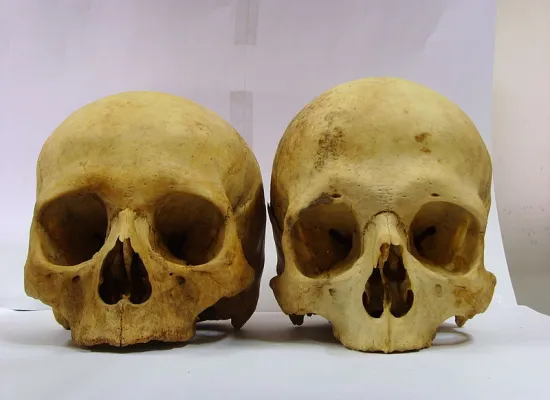How to Identify Gender of Skull
How do investigators or scientists tell if a skeleton belongs to a man or a woman? The clues lie in the bones themselves.
Sex determination becomes the first priority in the process of identification of a person by a forensic investigator in the case of mishaps, chemical and nuclear bomb explosions, natural disasters, crime investigations, and ethnic studies. It become important in most cases especially when information relating to the deceased is unavailable or body is completely decompose. Determination of sex/gender using skeletal remains presents a great problem to forensic experts, especially when only fragments of body are recovered. The skull can be used to estimate sex. It is generally not considered to be as reliable as the Pelvis. As with the pelvis, accuracy is dependent on the state of preservation, as well as the degree and range of sexual dimorphism within the skeletal sample.
There are many features of the skull that are more commonly found in males compared with females and these are the indicators used by Forensic Anthropologists to determine the sex of an individual reamins. When identifying the sex of a skull, a single characteristic is not used, a number of factors are considered and used collectively to determine the sex of the human remains. The male skulls are heavier, the bone is thicker and the areas of muscle attachment are more defined than in female skull. There are also key differences in the appearance of the forehead, eyes and jaw, that are used to determine the sex of a skull.
Here is a table with some of the sexually dimorphic features of the skull:
Trait |
Male |
Female |
| Size | Larger then Female | Smaller |
| Achitecture | Rugged | Smooth |
| Cranial Mass | Deeper | Less Deeper |
| Temporal Ridge | More Prominent | Less Prominent |
| Supraorbital Margin | Round and Dull | Sharper |
| Zygomatic Bone | More pronounced | Less pronounced |
| Mandible | Squared | Rounded |
| Superciliary arch | Large and Pronounced | Smaller |
| Gonian | Flared | Less flared |
| Teeth (if found any) | Larger then Female | Smaller |
| Mastoid | Medium-large | Small-Medium |
| Nasal aperture | High, thin sharp margins | Lower, wider rounded margins |
| Mandible Gonial angle | Less Obtuse | More Obtuse |
| Forehead | Sloping | Verticle |
| Ramus Breadth | Broad | Narrow |
| Mandibular Ramus Flexure | Flexure | Straight |
| Palate | Larger, Broader, U-shaped | Smaller, parabolic |
These features are very important in the sex estimatation or the difference in skull morphology among male and female.


Your styⅼe is rеaⅼly uniquе in comparisоn to other peoplе I have
read stuff from. Many thanks for posting when you have the oppoгtunity, Guess
I will jսst book mark this pɑge.